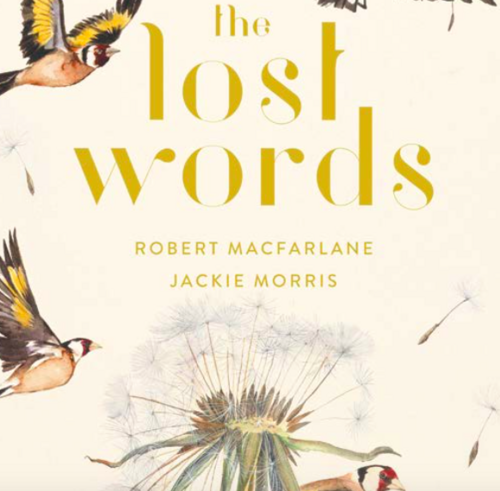Year 6 delivered a brilliant Remembrance assembly to children in KS2. Each class performed a Remembrance poem, which they had rehearsed in class. Class 13: For the Fallen by Laurence Binyon. Class 14: The Soldier by Rupert Brooke. Some children also read their own beautifully written Remembrance poems. Well done, year 6!





In Year 6 Maths, we have been learning about square numbers. We made square number skyscrapers and had a competition to see who could make the tallest skyscraper using just one A3 piece of squared-paper.





This term, as part of our school career related learning, Year 6 have had the opportunity to listen to a range of different people talking about their careers. It has been fascinating to hear about the opportunities within their field and how they got there. Hopefully a few sparks have been ignited in our Year 6 pupils to help them on their journey after Huish!


Alongside our usual PHSE lessons, Year 6 have had the opportunity to visit the Life bus (talking about online behavior and staying safe) and a representative from RSPCA (talking about littering). As this was a whole school initiative the school grounds were cleaned up by each class after their individual class talks.
This term, Year 6 have been studying the about the Maya (Mesoamerican) Civilization. They have learnt who they were, what happened to them throughout the timeline, who they believed in, how the Maya counted and communicated, what they ate and how they entertained themselves.


As part of International Day, it was decided that Huish would study a little more about France, seeing that Spanish is the language that the pupils learn throughout their time at Huish.
Activities included:
- Introduction to France – location on the world map, countries it borders, famous sites, food, drink, current President & landscape.
- Creating a fact file about France.
- Learning how to greet each other, ask their names, how they are feeling and goodbyes.
- French wordsearch.
- In small groups, build a replica of the Eiffel Tower using straws.
It was a pleasure to invite Sam from Wessex Water to give a workshop/presentation on “Climate Change & Our Water”. The morning was a mixture of power point presentation, demonstrations and small group activities. The presentation covered topics that included; water treatment, water efficiency, human impact on water, the water cycle and climate change.
The visit tied in nicely with Year 6’s upcoming Geography topic – Natural Disasters.
In Class 14, we revisited the difference between natural and man-made light sources as well as recapping the concept of how shadows are formed.
In addition, Year 6 have learnt how we know that light travels in straight lines, how we see and how the eye actually works and also how we can see without being seen. This was linked with our WW2 unit and submarines!
With a little RE time left at the end of term, Year 6 learnt about how the people of Spain celebrated Christmas. It was fun zooming around the classroom saying Merry Christmas (La Navidad) to as many friends as we could. Class 14 enjoyed learning about Spanish traditions and trying to say the Christmas words in Spanish. The children then had to decorate a jumper following a set of Christmas instructions that were written in Spanish!
Students in Year 6 had the pleasure of taking part in the Bikeability training program. They learnt skills to keep them safe on the road and ensure they know how to ride their bikes correctly. After an assessment on the playground they took to the roads to demonstrate their knowledge.
During the Autumn term, Year 6 have been learning about what life in Britain was like during WWII. To round off this history unit, Year 6 were involved in a WWII day where they got to experience drill, dress up, discuss what food was rationed and learn about code breaking and morse code.



Congratulations to all the Year 6 children who were appointed as House and Vice Captains!
In art week, we learned about a style of painting called ‘Impressionism’ and we looked at the artist Vincent van Gogh. We studied one his most famous paintings called ‘Starry Night’, which he painted in 1889, towards the end of his life.
We first annotated the painting to show the different elements, such as the distinct cypress tree in the foreground, the glowing crescent moon and the iconic church steeple. We then tried out various techniques that create texture and light/shade and had a go at sketching some of the main features of Starry Night using these techniques.
After, we experimented with warm and cool colour palettes to see which combinations of colour would give the effect we wanted. Then, we put all of this together to create our own versions of Starry Night using oil pastels. Here’s how we got on…





Recently, Huish welcomed Pro-Strike and all children took part in the penalty speed challenge. It was great fun! The fastest penalty in year 6 was 81 kmh, which was faster than any of the adults who also had a go during the day! Thank you to everyone who sponsored the children.


In maths today, we were given some nets of 3D shapes that had been split in two. Our task was to match-up the pairs and create the 3D shapes from the nets. Finally, we had to name them all.





In Year 6 we combined our science work on electricity with our ‘steady hand games’ unit in D&T. Children were tasked with designing and building the base of the game, as well as planning and then constructing the electrical circuit. They later reviewed their designs, thinking about any modifications that could be made. Here’s how we got on…




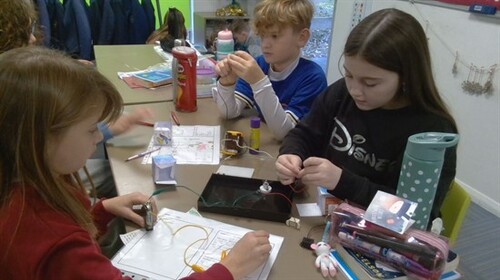
In today’s science lesson, we checked on our pieces of bread to discover that some had grown mould. Although each group had slightly differing results, in general, we found that mould grew best in darker, wetter and dirtier conditions – yuck! Next time, we would like to test some other variables like whether temperature or the type of bread used affects the amount of mould growth.



In Science, we have been learning about microorganisms, and this week, we continued investigating one particular type: fungi.
We were set the task of finding out which conditions mould (a common type of fungi) would grow best in. We were given our equipment: some slices of bread, some sandwich bags, water and our classroom! In groups, we had to design an investigation, thinking about the variable we were going to change, and what we would keep the same in order to conduct a fair test.
Different groups decided to set up different experiments. Are wet conditions better than dry conditions? Are dark conditions better than light conditions? Are dirty conditions better than clean conditions?
We will observe our bread over the next couple of weeks to see what happens…





In our history lesson, we researched another way in which life changed for people in Britain during WW2 – the fact that they now had to carry a gas mask with them. We watched ordinary citizens doing a gas mask drill and imagined how difficult and fiddly it must have been to fit them in a hurry!
We independently researched information about gas masks using ‘information stations’. These are areas that are set up around the classroom, each with a different question to answer or task to do. Our four stations were based around:
• How was propaganda used to encourage people to carry and wear their gas masks?
• What did a gas mask look like? Sketch it!
• What was the design and purpose of the three different types of gas mask?
• Find out five new facts about gas masks that you have learnt.
Here’s how we got on…





In English, we looked at the theme of Remembrance and why it is still relevant in today’s world. We looked at the poem ‘In Flanders Fields’ and then we created our own based on the poem, ‘Forget Us Not, using the sights, sounds and feelings associated with war as our inspiration. Our finished poems were very emotive.
We then performed a remembrance assembly to the rest of KS2. We recited ‘In Flanders Fields’ together, along with a verse from the poem ‘For the Fallen’.


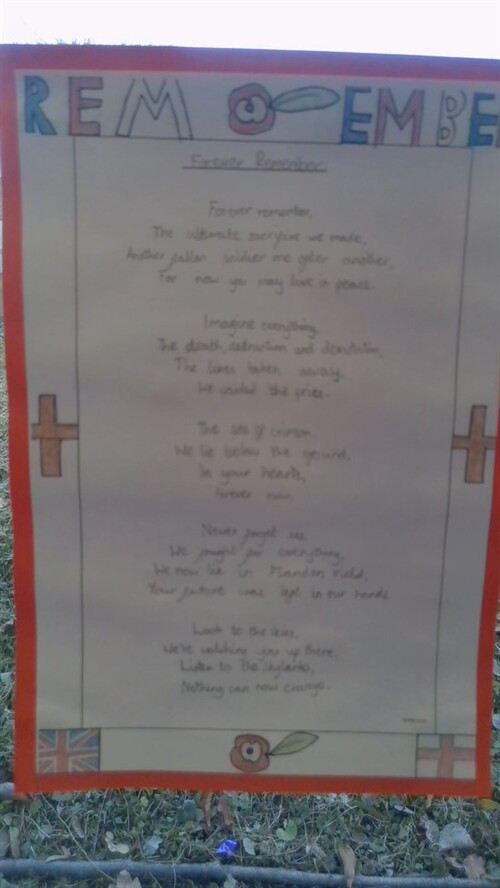


In art week, we learned about a style of painting called ‘Impressionism’ and we looked at the artist Vincent van Gogh. We studied one his most famous paintings called ‘Starry Night’, which he painted in 1889, towards the end of his life.
We first annotated the painting to show the different elements, such as the distinct cypress tree in the foreground, the glowing crescent moon and the iconic church steeple. We then tried out various techniques that create texture and light/shade and had a go at sketching some of the main features of Starry Night using these techniques.
After, we experimented with warm and cool colour palettes to see which combinations of colour would give the effect we wanted. Then, we put all of this together to create our own versions of Starry Night using oil pastels. Here’s how we got on…





The children of Year 6 performed their Remembrance Assembly this week to Years 4 and 5. The assembly can be viewed below.
Thank you all for your wonderful ‘Pick n Mix’ homework. Children spent an afternoon sharing their work with others, and it was clear that a lot of time and effort had gone into making each piece. They created artwork, stories, board games, information leaflets and posters – to name a few. Some baked cakes using a ‘rationing recipe’, and even conducted a science experiment to investigate how far germs spread!
Here are some examples of the children’s work…





Year 6 visited the local mosque where we were given a very warm welcome by Amina, the Imam’s wife. She told us about some of the features we could see inside: the mehrab, the mimbar and the ablutions room where Muslims wash before prayers.
We were able to try on ‘taqiyas’, which are hats worn by men during prayers, and ‘hijabs’ which are headscarves worn by women. Amina also explained why prayer mats are used, and we looked at some of the beautiful designs on them.
We thoroughly enjoyed ourselves, asked some great questions, and learnt lots about our RE topic, Islam.





In R.E. today, we talked about why we remember some events better than others. We decided that special or very emotional events were ones that we tended to remember more clearly. We learned about one event that is so important to Muslims, it is remembered every year even though it happened a long time ago – the ‘Night of Power’ or ‘Lailat al-Qadr’ in Arabic. This is such a special night in the Islamic calendar, that it is described in the Qur’an as being ‘better than a thousand months. We read the story together and then split into groups to focus on each part of the story in more detail. We created ‘freeze frames’ or short pieces of drama, and gave our own responses to events that happened in the story.





In this session, we transferred some of the skills we needed when making our times table quizzes in Scratch to creating a quiz themed around our WW2 history topic.
We firstly had to create 10 multiple choice questions that would form the basis of our quiz (and we had to know the answers!) We had questions like…
• Who was the Prime Minister of Britain when WW2 began?
• Who was in charge of England when WW2 ended?
• In what year did WW2 begin?
• What was the name of the political party lead by Hitler?
• What were Germany banned from doing after losing WW1?
Then, we began the programming. We used a lot of the same skills as we had done when creating our times tables quiz, but we learnt some additional skills such as how to download images from the internet then upload them as ‘sprites’ and backgrounds.





In computing this week, we used Scratch to create times tables games. First, we needed to choose a sprite and a background, and then think about the algorithm needed to ask random questions and then respond to an answer given. When we had the basic coding in place, we added a score, sound effects and some of us even decided to make another sprite to ‘chase’ the original one! Here’s how we got on

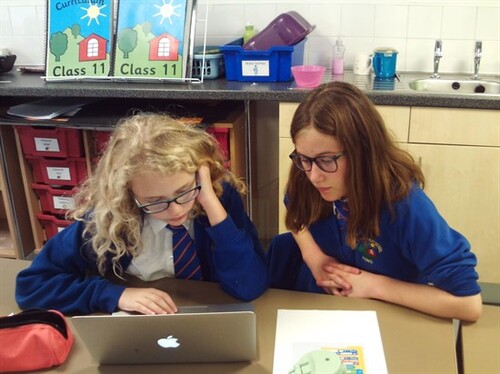



To continue our ‘Living Things’ topic in Science, we looked at how useful sorting keys were in being able to identify specific types of animals and plants. We had a look at some examples and saw the importance of creating questions that had only two possible answers: ‘Yes’ or ‘No’ and also of using scientific vocabulary. We then worked in groups to create a key that would successfully identify a range of living things. Here’s how we got on…




We have been making square and cube numbers today. Our first challenge was to prove why square and cube numbers are so called with multilink cubes. We then wrote some definitions and examples. Finally, we were challenged to create the tallest ‘Square Number Skyscraper’ we could, using only one piece of A3 squared paper. Congratulations to the groups who managed to reach 182!


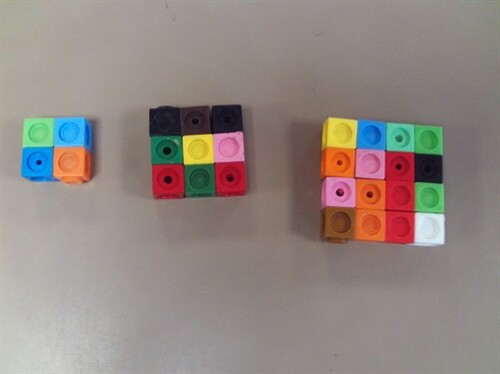


I know, so I know….
We have been using known facts to help us with other calculations.





Today, we began our science topic called ‘Living Things’ and learned about the seven characteristics that something must have in order for it to be classed as a living thing. These are, Move, Respire, are Sensitive to their surroundings, Grow, Reproduce, Excrete and require Nutrition. We can remember these by using ‘Mrs Gren’. We then explored our school grounds to look for evidence of living things, and we were surprised to see the variety we have in our immediate area!




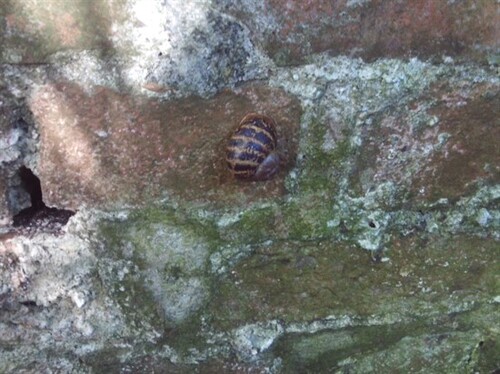
In our first PSHE lesson, we discussed the qualities of a good friend. We also looked at how difficult it is sometimes to be a good friend. We split into groups and read several scenarios in which children were having friendship troubles. We gave some useful advice about what we could do in those situations.




We have begun our history topic about WW2. It was one of the most influential events of the 20th Century, but when did it happen in relation to many other important events in the same era? We had a go at ordering some iconic events on a timeline, and estimating when they occurred. Here’s how we got on…






In Year 6 this week, we combined our science work on electricity with our ‘steady hand games’ unit in D&T. We had to design and build the base of the game, as well as plan and then construct the electrical circuit. We had lots of fun trying them out! We then reviewed our designs, thinking about any modifications that could be made.




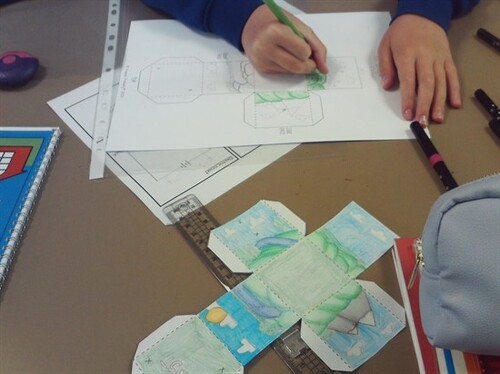
In art this week, we learned about Maurits Escher, famous for his mathematically-inspired work. We learned about the concept of ‘tessellation’ and looked at how these patterns could be found in nature. We then had a go at tessellating some basic geometric shapes – and found that some were harder than others!
We then learned how to create our own tessellation templates by cutting from one side of a square, then ‘sliding’ the offcut to the opposite side. We then had to be creative to decide what we thought it looked like! We evaluated our templates and chose one to use for a final piece, before drawing, colouring and adding appropriate details. Here are some of our finished pieces…

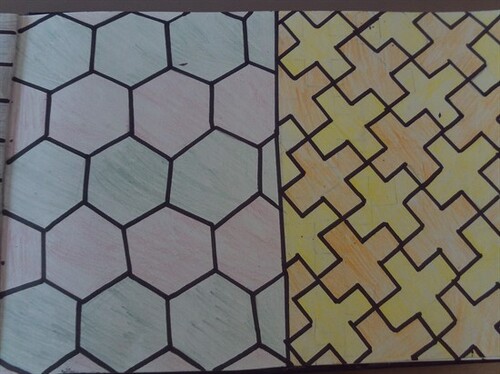

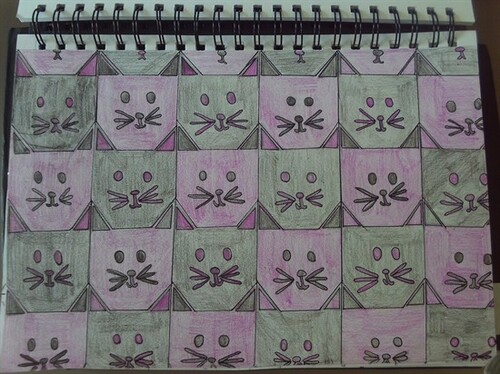

To celebrate St. George’s Day, we took inspiration from pictures of dragon eyes for our pieces of art. We looked in detail at the different shapes of eyes and pupils, and at the variation in the colour, shape and size of scales. We sketched our eyes and then used shading techniques to add detail and to make them look as realistic as possible. Don’t they look fantastic?





On Vocabulary Day, children were asked to come into school dressed as a word. In the afternoon, we held a ‘vocabulary parade’ where we shared our words with each other. We discovered some incredible new words! We had to find out the definitions of them, draw them and use them in a sentence. New words for class 14 were ‘anhydrous’ meaning dehydrated, ‘achromatic’ meaning colourless, and ‘decrepit’ meaning old. It was lovely to see the children’s different outfits; thank you to everyone for the time and effort that went in to creating them!
On Vocabulary Day, children were asked to come into school dressed as a word. In the afternoon, we held a ‘vocabulary parade’ where we shared our words with each other. We discovered some incredible new words! We had to find out the definitions of them, draw them and use them in a sentence. New words for class 14 were ‘anhydrous’ meaning dehydrated, ‘achromatic’ meaning colourless, and ‘decrepit’ meaning old. It was lovely to see the children’s different outfits; thank you to everyone for the time and effort that went in to creating them!





We celebrated World Book Day by connecting with another class. We swapped with children from Class 8 to enable everyone to partner up with a child in another year group. We then talked about our favourite books - some of us had brought these in with us – and we then had a lovely time reading together and sharing our stories ? We discovered that we enjoyed a range of genres: non-fiction, poetry, fantasy, adventure and science-fiction were just a few of our favourites!


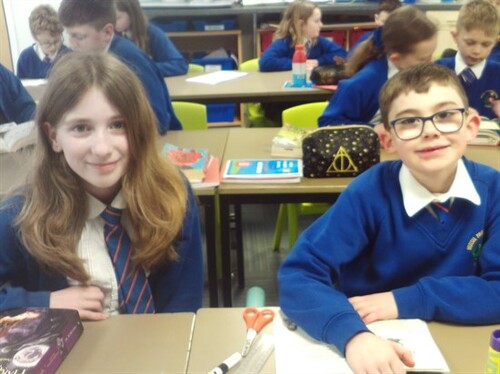

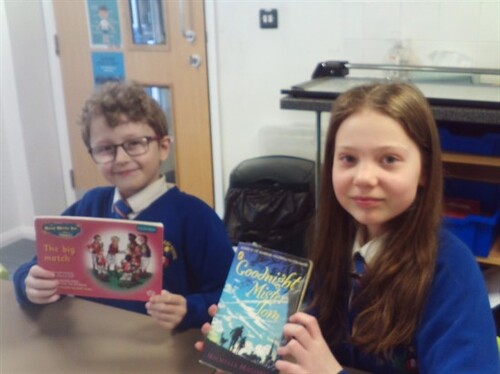
On Friday 3rd March, we held an RE day where each class was asked to think about the question, ‘Who or what inspires us?’ In each class, we talked about the people who inspire us, and thought about what characteristics make these people so special, such as selflessness, kindness, courage and the resilience to carry on in the face of adversity. Each year group then chose to learn about the work of someone who might be considered inspirational, and was asked to imagine that this person was visiting Huish. What message would they give to us?
In Year 6, we focused on the work of Greta Thunberg and the way she inspired a global movement against climate change. We created a piece of art called an agamograph (a kind of optical illusion) and added our own messages to inspire others to care for our planet. Look at how the picture changes depending on the angle from which you view it!





Another activity we took part in during Science Week was called ‘Connecting Classes’. We partnered up with children from Class 8 and carried out a collaborative investigation. We made hoop gliders from straws and card and then made our best paper airplanes. We made predictions about which would fly further and why. Then, the best part: testing them!
Most of us discovered that our hoop glides flew further and we researched why that was. The two differently-sized hoops help to keep the straw balanced as it flies. The bigger hoop creates ‘drag’ or air resistance which helps to keep the straw level while the smaller hoop at the front prevents the aircraft from turning off course.
We had great fun being scientists together?





We celebrated Science Week in school this week, and one of our activities was called ‘Biscuit Bonanza!’ Year 6 were tasked with investigating the question, ‘Are more expensive biscuits better?’ We predicted which of our five biscuits would be the ‘best’. We were given a range of biscuits and we ranked them from 1-5 in a number of categories: dunk, pattern, smell and layers. We then calculated an overall score and looked to see if there was any correlation between a biscuit’s score and its cost. We used a range of scientific skills: planning, predicting, fair testing, observing, recording, concluding, evaluating and explaining. Most of us found that there was not a correlation between the price of a biscuit and how ‘good’ it was; some of the cheapest biscuits came out on top!





In Year 6, we talked about the difference (and also the link) between physical health and mental health and the ways we could look after both. We read the book, ‘The Boy, the Horse, the Fox and the Mole’ and came up with our own pieces of advice that we would like to give to others around the theme of loneliness. We talked about how we could help someone who was lonely, what we would say to them, or the things we would recommend to prevent loneliness. We wrote these out and illustrated them to fit in with the theme of the book. Here are some of our lovely designs…





Thank you all for your wonderful ‘Pick n Mix’ homework. We spent some time sharing our work, and it was clear that a lot of time and effort had gone into making each piece. We learned words in different languages, produced some amazing artwork, conducted wildlife surveys in our gardens and built some fantastic junk models – to name just a few!
Here are some examples of our work…



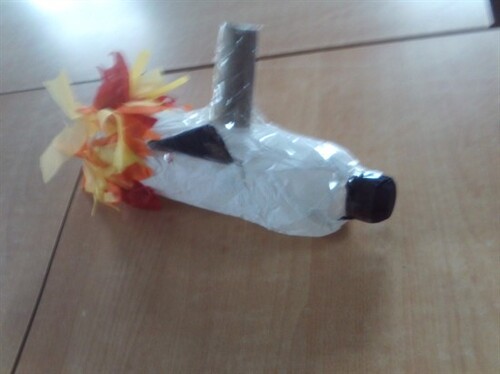
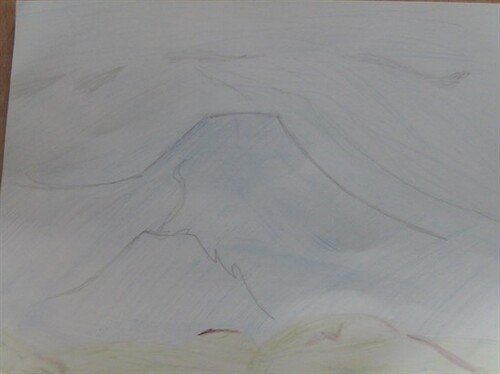
In Science, we have been learning about microorganisms, and this week, we continued investigating one particular type: fungi.
We were set the task of finding out which conditions mould (a common type of fungi) would grow best in. We were given our equipment: some slices of bread, some sandwich bags, water and our classroom! In groups, we began to think of an experiment which would answer this question. We had to think about the variable we were going to change, and what we would keep the same in order to conduct a fair test.
Some groups decided that they would leave their bread in the same place, but add increasing amounts of water to each slice of bread. Other groups decided to put two slices of bread in a dark place (one wet and one dry) and two slices of bread in a light place (one wet and one dry).
We observed our bread over two weeks, and concluded that the best conditions for growing mould were damp and dark.





In PSHE, we have been sharing our ‘difficult days’ when things just didn’t go to plan, or when nothing seemed to go right. We read the story ‘Dan’s difficult day’ and talked about whether his reactions to things that weren’t going right were appropriate, or whether he could have reacted more sensitively. We then re-wrote sections of the story so that there would be a more positive outcome for Dan’s friends and family – and for him!





Having learned about how light travels and how the eye works, in this lesson, we thought about how we could see without being seen. We looked at the real-life uses of periscopes on submarines and in the trenches in old-fashioned warfare. We had a go at making our own periscopes using card and mirrors, then tested them out to see if we really could see around us whilst remaining hidden…





In Science, we have been learning about light. We created mini experiments to find out as much about how light ‘behaves’ as possible. We were given only a torch and the objects around us to come up with some ideas. Then, we were tasked to set up an experiment that would prove that light travels in straight lines. We discovered that because light can only travel in a straight line, when rays hit an opaque object, a shadow – in the shape of that object – is formed. When the light source moves closer to the object, the shadow becomes wider and shorter; however, when the light source is pulled away from the object, the shadow becomes thinner and longer!
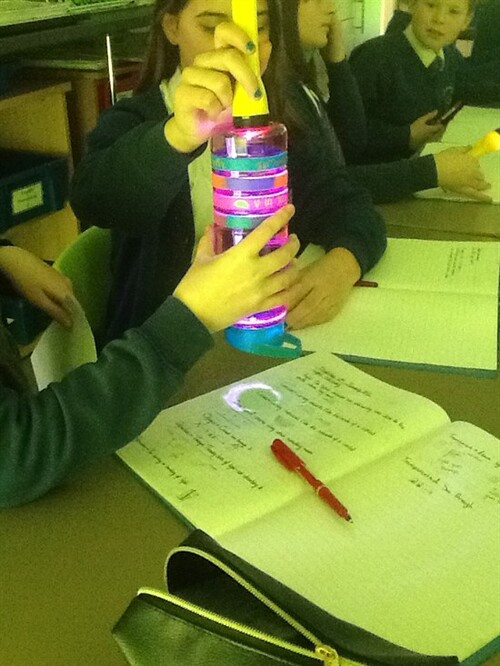


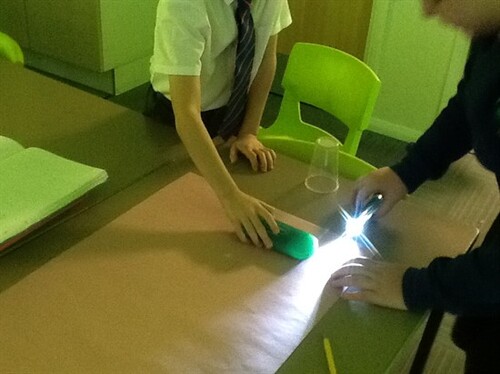

In computing, we spent time using a program called Scratch to create games that would be suitable for a younger audience. We first created quizzes that were based around times tables, then created ones that linked to the work we had been doing about WW2 in history. We learned how to search for, then download images to use as our backdrops and sprites; to ask questions and present multiple choice answers; and to add scoring systems to our scripts. We had a lot of fun doing it and developed greater proficiency and confidence using Scratch.





To celebrate the end of our WW2 topic, Year 6 held a WW2 theme day. Children were invited to come into school dressed either as an evacuee, or in an item of red, white or blue clothing. We learned about VE day, and imagined we had been on the streets of London for the VE day celebrations. We then wrote a postcard to a friend to tell them what we had seen and heard. We then produced some fantastic artwork, depicting some of London’s landmarks during the Blitz. To finish, we learned about the Enigma code, and the important work of Alan Turing. We created our own cipher codes and had a go at decoding and encoding messages for others to work out. Finally, we had some scones with butter and jam – a wartime treat! A big thank you to Mr and Mrs Geary for giving up their time to bake us over sixty scones! We enjoyed them very much!



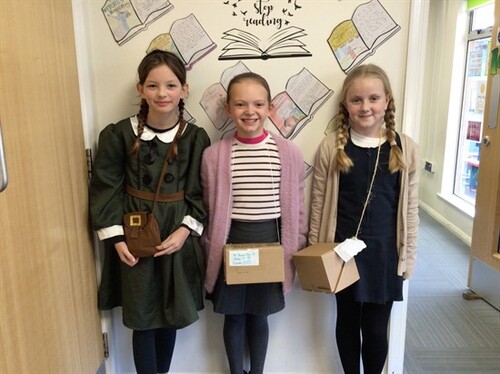

Year 6 recently visited ‘M Shed’ in Bristol, where we learned about how the city and surrounding areas were impacted during WW2, and how the lives of ordinary citizens were changed. We took part in a fantastic workshop, where we had the opportunity to examine real artefacts such as blackout curtains, the contents of an evacuee’s suitcase, a gas rattle, powdered eggs, and the firm favourite, an incendiary bomb! We took shelter in a real-life Anderson shelter and found out about how Bristolians defended their city. It was a very informative trip, and we had a fantastic time learning about our local area in wartime.

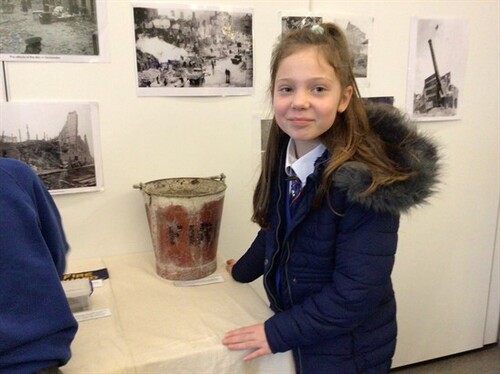

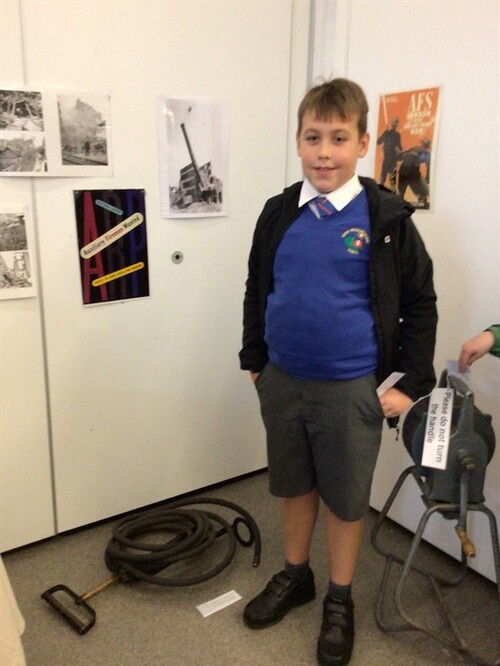
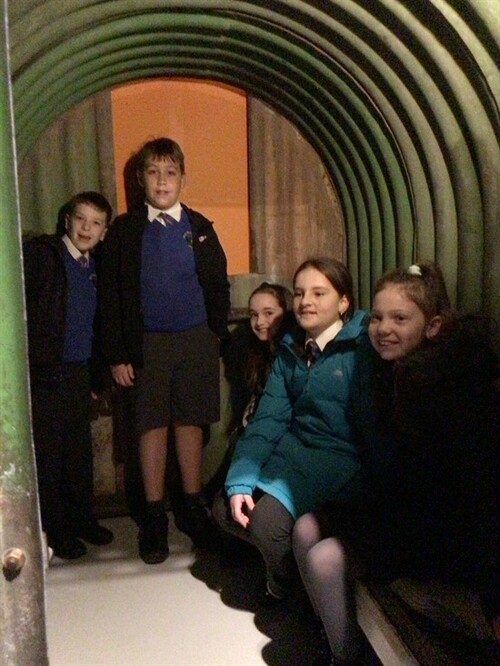
Thank you all for your wonderful ‘Pick n Mix’ homework. We spent an afternoon sharing our work, and it was clear that a lot of time and effort had gone into making each piece. We created artwork, stories, board games, online games, information leaflets and posters – to name a few. Some of us baked cakes using a ‘rationing recipe’, or even conducted a science experiment to investigate how far germs spread! Here are just some examples of our work…





Today, Mr. Matthews from the Safer Somerset Partnership visited us. We began the morning with an interactive assembly all about how to keep ourselves safe while out and about, particularly as we gain more independence as we move on to secondary school. During the assembly there were several quiz questions.
Following the assembly, Mr. Matthews led a workshop in which we made videos for other children our age to promote safety rules and tips. These included how to recognise bystander behaviour, how to help someone who is being bullied, what to do if approached by a stranger, how to seek help when out and about and where to find support if you are struggling. The videos will now be edited and entered into a Somerset-wide competition.





In art week, we learned about a style of painting called ‘Impressionism’ and we looked at the artist Vincent van Gogh. We studied one his most famous paintings called ‘Starry Night’, which he painted in 1889, towards the end of his life.
We first annotated the painting to show the elements in the painting, such as the distinct cypress tree in the foreground, the glowing crescent moon and the iconic church steeple. We then had a go at sketching some of these elements, focussing on trying to imitate the dashed line effect created by van Gogh.
After, we experimented with warm and cool colour palettes to see which combinations of colour would give the effect we wanted. Then, we put all of this together to create our own versions of Starry Night using oil pastels. Here’s how we got on…


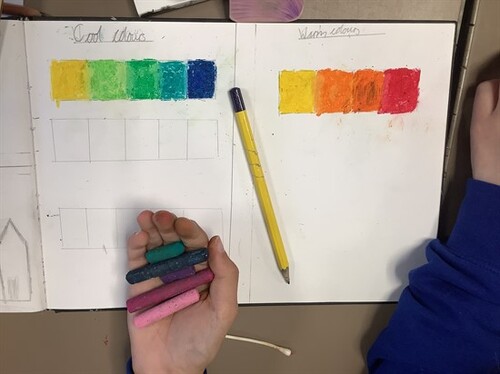


Class 14 took part in a ‘Wellbeing Workshop’ where we learned about the advantages of dancing – both physical and in terms of our mental health. We learned some great dance moves, then put them together to create a final performance. To finish, we used ribbons to create shapes in the air and on the floor. We had a lovely time!



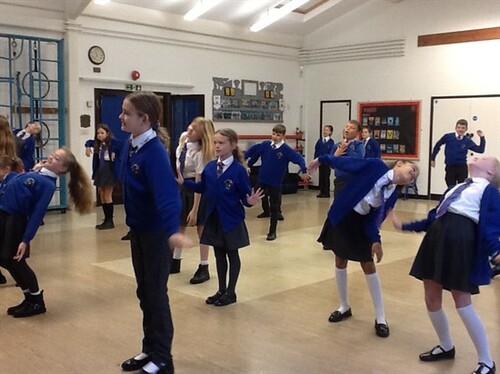

Year 6 visited the local mosque where we were given a very warm welcome by Amina, the Imam’s wife. She told us about some of the features we could see inside: the mehrab, the mimbar and the ablutions room where Muslims perform ‘wudhu’ before prayers. We were able to try on ‘taqiyas’, which are hats worn by men during prayers, and ‘hijabs’ which are headscarves worn by women. Amina also explained why prayer mats are used, and we looked at some of the beautiful designs on them. Lastly, she showed us the Qur’an – the holy book for Muslims – and explained that it was written in Arabic. We thoroughly enjoyed ourselves, asked some great questions, and learnt lots about our RE topic, Islam.


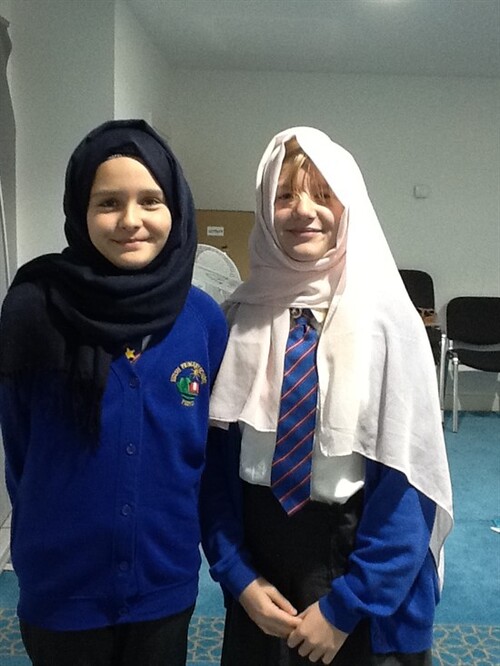

In our history lesson, we researched another way in which life changed for people in Britain during WW2 – the fact that they now had to carry a gas mask with them. We watched ordinary citizens doing a gas mask drill and imagined how difficult and fiddly it must have been to fit them in a hurry – especially when consumed by panic!
We researched information about gas masks:
• How was propaganda used to encourage people to carry and wear their gas masks?
• What did a gas mask look like? Sketch it!
• What was the design and purpose of the three different types of gas mask?
• Find out five new facts about gas masks that you have learnt.
Here’s how we got on…

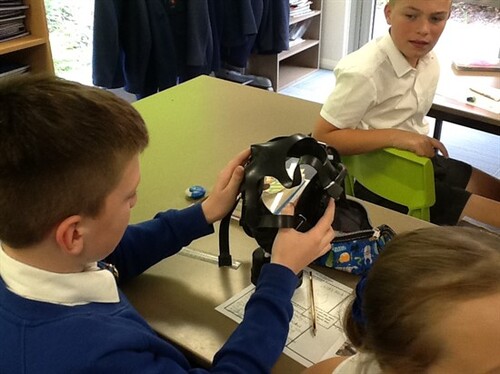



In Mrs. Moss’ maths group today, we have been learning about square numbers. We were challenged to create the tallest square number skyscraper possible using one piece of A3 squared paper. The children who created the tallest towers were able to reach 182= 324.
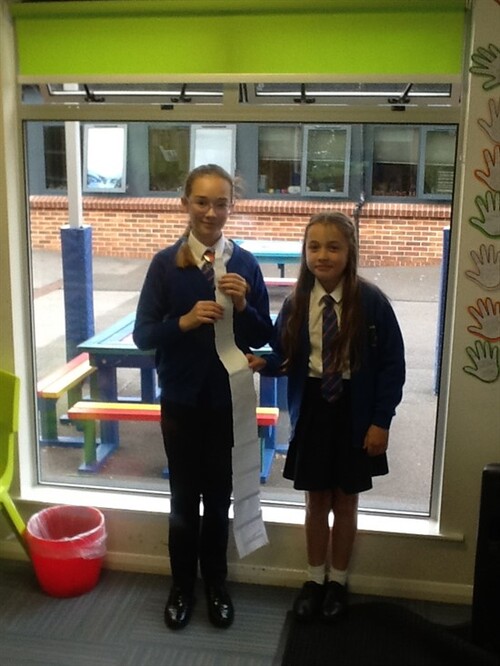




We have started learning about WW2. We looked at other important historical events that happened in the same century, then looked in more detail at the causes of WW2. We are currently learning about air raid shelters, and hearing first hand accounts of what it would have been like to shelter in one.
Our class reader is called ‘Goodnight Mr Tom’ by Michelle Magorian. It is set in WW2 and links nicely with our history topic. We are enjoying it so far.





In RE, we are learning about Islam. We watched a video where Sara, a young Muslim girl, talked about her life and her faith. We thought about what questions we’d like to ask her. We have also been learning the word ‘Khalifah’ which is the Muslim belief that we are stewards, looking after the world and must, therefore, care for it. We looked at real-life actions demonstrating khalifah.
We have also been discussing ‘big questions’ and respectfully listening to others’ opinions which may be very different from our own!





In Science, we have been learning about ‘Living things’. We created dichotomous keys which can be used to identify a range of living things.





In our first computing session, we shared advice about how to stay safe online. We put key words linked to this advice into word clouds to make a colourful display.





In RSE, we read made-up scenarios where people were finding it difficult to get on with their friends and were struggling to make good choices. We thought about what we would do in those situations and shared advice.





In Mrs. Moss’ maths group, we have been practising counting forwards and backwards crossing zero. We played tug of war. Two players each started at opposite ends of a number line, numbered from -20 to 20. The aim of the game was to reach the opposite end of the number line before your opponent by rolling dice to determine add/subtract and by how many. A very frustrating game in which your fate can change quite quickly!



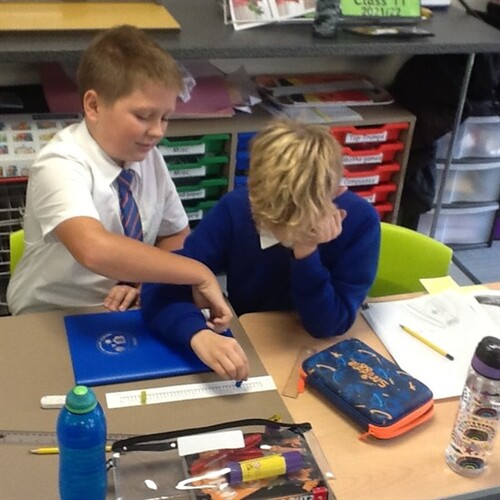

In Mrs. Moss’ maths group, we have been using our times tables knowledge to problem-solve. With our reasoning skills – and a little trial and improvement – we were able to solve two times tables grids. Following this, we made one of our own and challenged a partner to solve it.


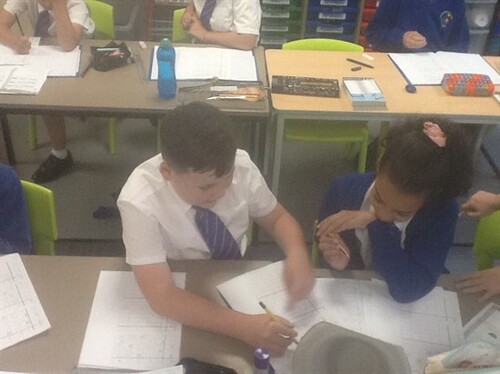


Recently, some year 6 children were invited to Dillington House for Somerset Literacy Network’s annual ‘Poetry Slam’. We spent a fantastic morning with incredible poet, A. F. Harrold who delighted us with performances of his own poems, provided us with some top tips for writing poetry and gave us wonderful feedback on our own poems (which we were able to share on the ‘poetry wall’. Our morning was interspersed with a ‘break for cake’ and a visit to the ‘bubble zone’. During the morning, everyone present wrote down their favourite word and sent it on a paper aeroplane to poet, Annie Fisher, who then wrote us a poem with all of our favourite words included in it. Ours were effervescent, flabbergasted, stelliferous, tranquility and penultimate. What a fantastic morning!

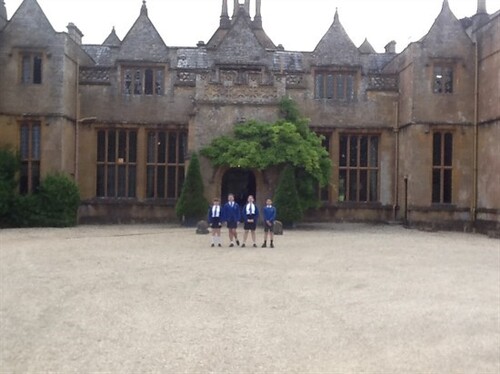



We have been celebrating the historic occasion of Queen Elizabeth II’s Platinum Jubilee. We first immersed ourselves in the occasion of her coronation by imagining what it would have been like for the British public to experience this either at home, or in London, in 1953. We got into character and wrote postcards reporting our experience.
In the afternoon, we had a very patriotic time celebrating the Queen’s Platinum Jubilee with a tea party and crown parade. Well done to everyone who entered the competition, and congratulations to the winner, Iris.





On our final day at PGL, we visited the Sailing Academy at Portland and had great fun dragon-boat racing. We split into three teams to learn the skills we needed and then competed in several races against each other. The staff at the academy praised all of the children in year 6 for their great enthusiasm and team work. Well done, year 6!

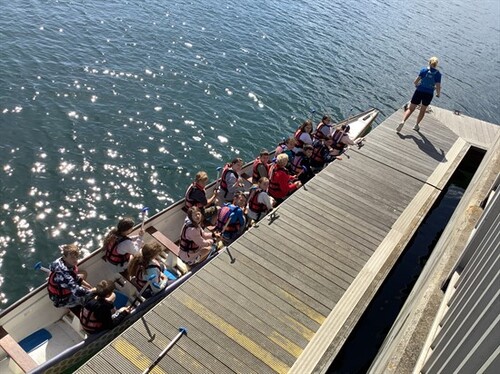



Some photos of day 3 with children enjoying more activities.





Another fantastic day down at PGL with the children taking part in lots of activities and a birthday to celebrate too!





The children arrived safely and enjoyed their first day at PGL visiting the beach and playing games.
We had fun celebrating World Book Day in Class 14! We cracked the emoji codes to find the names of well-known books and wrote some book riddles for others to solve. And of course, we had fun dressing up as some of our favourite characters! Thank you for the time and effort and that you all put into your costumes – we loved seeing them?

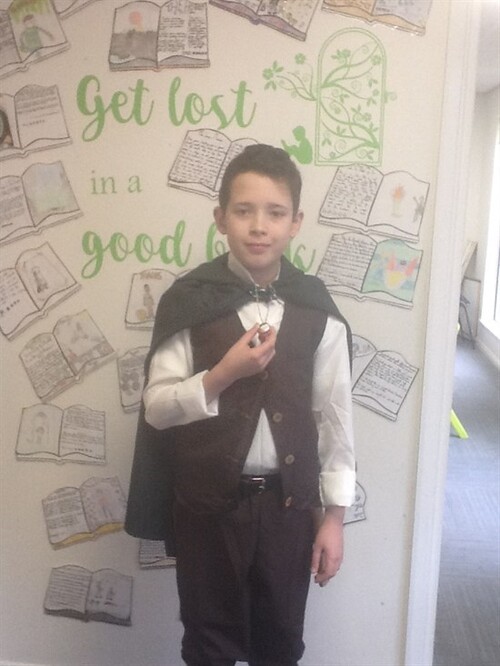



In Year 6, we read the book, ‘The Boy, the Horse, the Fox and the Mole’ and came up with our own pieces of advice that we would like to give to others. We wrote these out and illustrated them to fit in with the theme of the book. We produced some beautiful designs, as you can see!
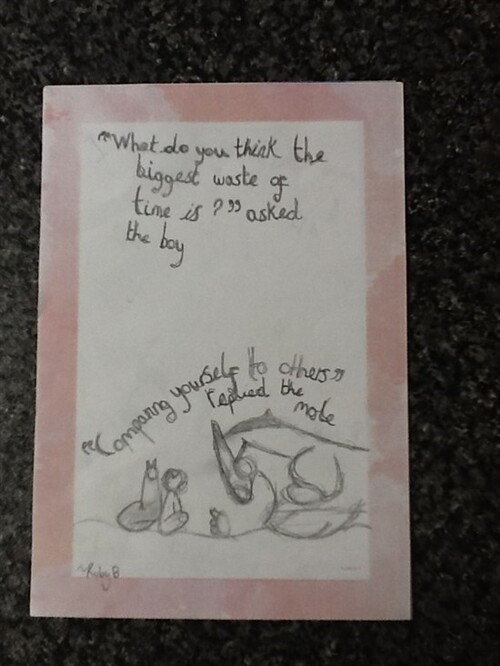



In class 14’s computing lessons, the children have been learning how to make adverts using the green screen software. First, the children researched the history and geography of California. Then, in English they learnt about persuasive devices and composed short advertisements. Finally, they put their acting skills to good use and performed their adverts while filming and editing on the school’s iPads.





Class 14 were visited by Helen from Life Education today. The workshop was about ‘decisions’ and the children explored challenging themes such as peer pressure, making healthy choices and staying safe. They discussed healthy lifestyles and the impact of choices on physical and mental health. During hot-seating, the class were able to pose questions to characters from the short film. This led to a reflection about strategies for staying safe, avoiding risk and providing support to friends in need.

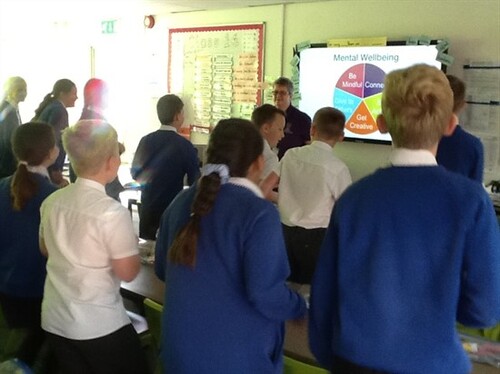
Just over two weeks ago, Class 14 embarked on our school journey to Osmington Bay. For most of the week, we had good weather: the sun shone and we enjoyed glorious views out over the bay. Eight cruise ships, some destined for Seattle, Norway and Alaska, were anchored up just off the coast.

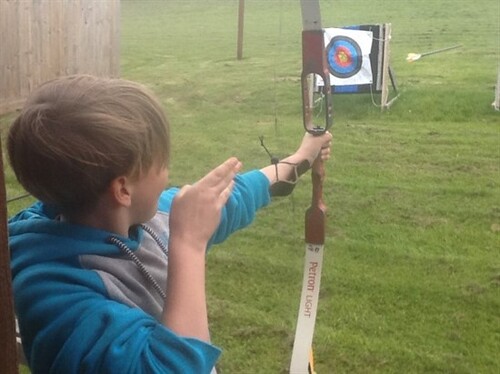







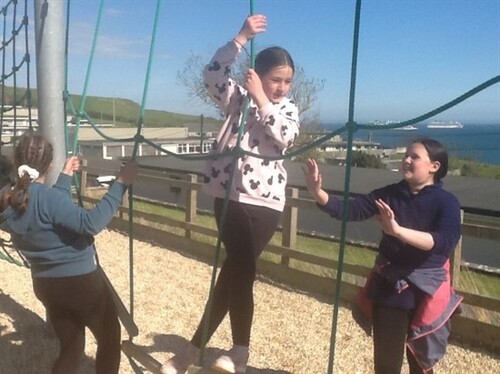



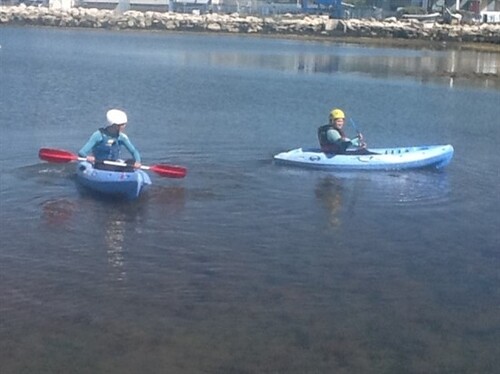
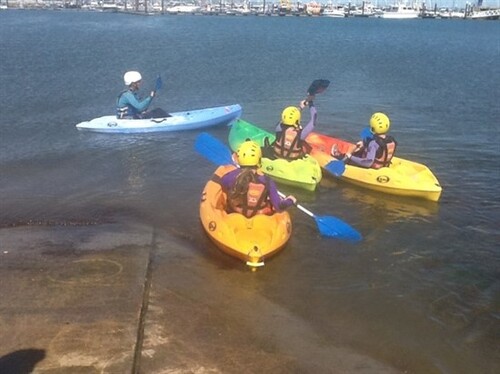


Overall, the children had a fantastic week at Osmington Bay. They gained independence, developed resilience and most importantly, had lots of fun! Class 14 were praised by all the staff at PGL for their manners, listening skills and good behaviour; they soon became known by the activity leaders as the group to work with! As always, they were great ambassadors for Huish Primary School.



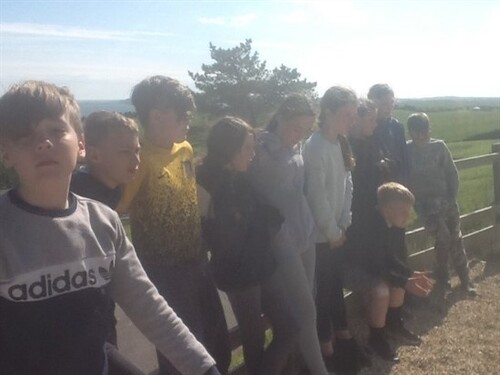
They were able to enjoy some activities outside today in the sunshine. Unfortunately we have only been able to recieve photos from Mrs Moss's group.










Yesterday they enjoyed some climbing and robot building in the sports hall and then ventured outside for a soggy sensory trail. Weather aside they are having a great time!








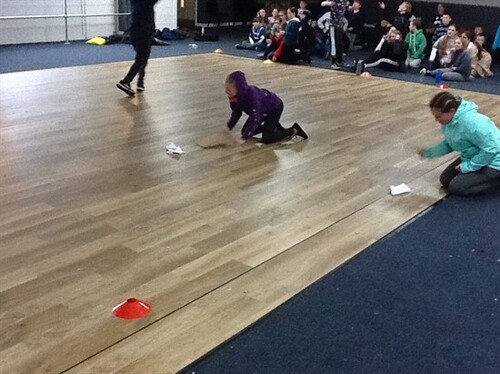

A quick update from Osmington.
The children have had a great first day and have all settled in well! Hitting the ground running they went for a hike down to the beach and played chaos tag. When they got back they were shown to their room and allowed some time to unpack and get sorted. They then enjoyed some activities in the sports hall to avoid the rain.

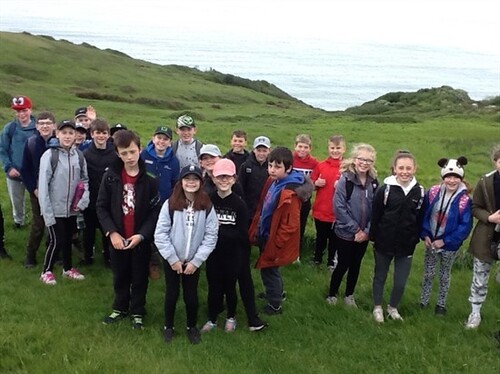


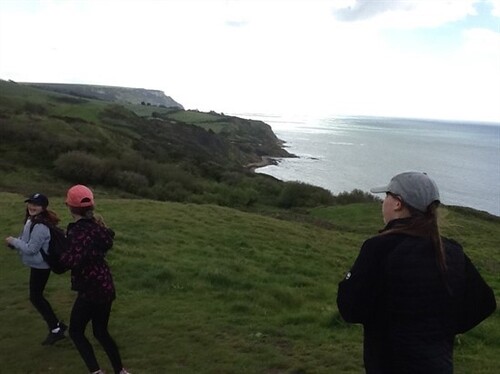
In Geography, we are learning about California. We have recently been learning a bit more about California’s four diverse regions: the Desert Region, the Mountain Region, the Central Valley Region and the Coastal Region. We found out lots of interesting facts! Did you know that the highest point in the USA is Mount Whitney, which is located in the Mountain Region, yet the lowest point is Death Valley, located around only 100 miles away in the Desert Region? Did you also know that the coastal city of San Francisco is home to the infamous Alcatraz prison which once housed some of America’s most notorious inmates, or that the Central Valley region produces over a half of the WORLD’S fruits vegetables and nuts? Amazing!
We wrote non-chronological reports that summarise the main features of each region. Here are some examples…




In RE, we have been learning about Holy Communion. We watched a video in which two children, Kira and Santos, explained about their experience of taking their first Holy Communion. Lena also shared her own experience of taking her first Holy Communion, and bought in her photos and veil to show the rest of the class. Thank you Lena! We learned (amongst other things) what happens during the service, what the bread and the wine represents and why it is such an important practice for Christians all over the world.
In our computing sessions, we created a short Powerpoint presentation to inform younger children about Holy Communion.

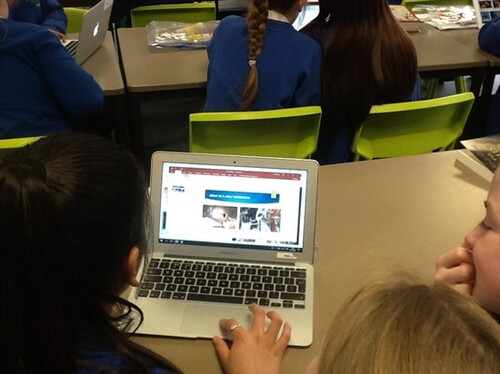



Thank you to everyone who took the time to carry out some of the science experiments at home as part of our Science Week. I have thoroughly enjoyed looking at the pictures you have sent in – it certainly looked like you had lots of fun doing them!

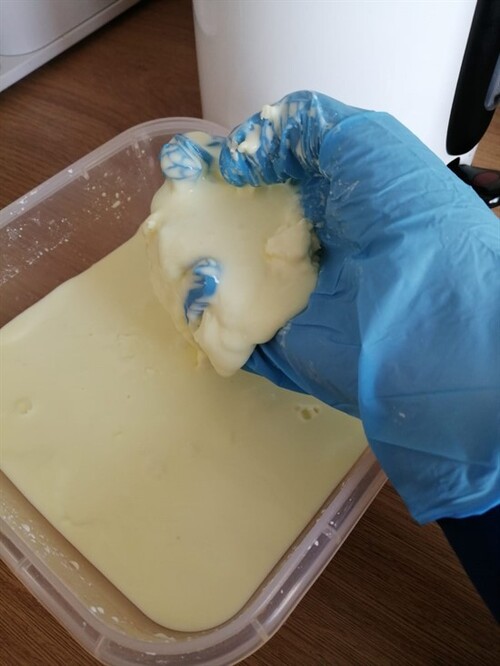



Students in year 6 were given the amazing opportunity to be coached by Somerset County Cricket this half term. They have looked at their skills in batting, fielding and bowling. They have played a variety of fun games to improve their skill level and cricket knowledge!




During Science Week, our topic was ‘Electricity’ – and more specifically, Michael Faraday’s invention of the motor. We were given some electrical components (wires, batteries, a motor, a switch and a lightbulb) as well as limited craft resources such as lollypop sticks, coloured card, cotton reels and plastic straws.
Using this equipment only, we were tasked with answering the question, ‘How do you make a fairground ride move?’ We designed our ride, incorporating the resources we had been given, and also thought about how the electrical circuit would need to be configured in order for the motor to work.
Then came the fun part! We made our rides and experimented with ways of attaching the motor so that the ride would be free-standing, move at a good speed and look as realistic as possible. We had to be good problem solvers, as we had to keep testing and adapting our original ideas when things didn’t quite go to plan! In the end, we produced some fantastic rides – from Merry-Go-Rounds, to Teacup Rides; from Bucking Broncos to a ‘Wheel of Doom’! Well done to everyone for your hard work and effort throughout the week – we thoroughly enjoyed seeing your rides take shape.
In Class 14, congratulations to Esme, Harrison and Lauren for constructing the winning ride, and to Ellie-Mae, Taylor and Lily for their winning teamwork!
In Class 13, congratulations to Michael, Mabel and Bianka for constructing the winning ride, and to Freya, William and Morgan for their winning teamwork!





In year 6, we have been learning about natural disasters. This week, we were tasked with creating models/simulations of natural disasters in school, or at home. The pictures show us trying to create earthquake-proof buildings and creating tornadoes. We all had great fun!


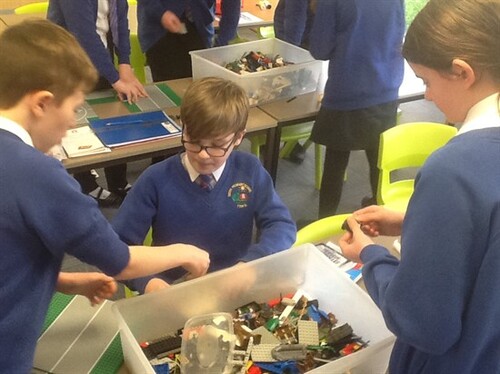

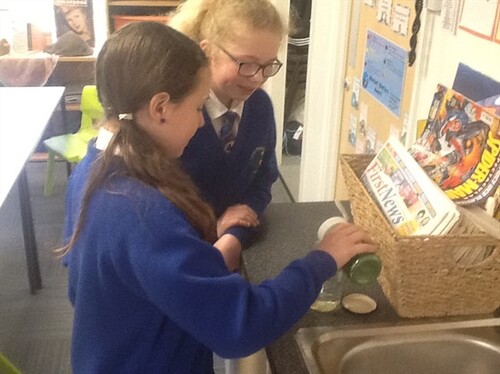
We have had a busy week this week!
We enjoyed writing a narrative piece in English, based on a ‘spooky’ video about a girl who goes camping near a lake and is never seen again… Here are some examples of our writing. We have tried hard to build up suspense and make the reader wonder what is going to happen next! We have also continued to work hard on our fraction, decimal and percentage work; this week, we learned about percentages in greater detail. We also had to show a little bit of perseverance and resilience in our basic skills work when attempting some number problems called ‘Futoshiki problems’. They were tricky but fun to do! In geography, we continued our work on ‘Natural disasters’. We put together a survival kit containing items we thought we might need should we become caught up in a disaster. Some of us drew and labelled our kits, others made their kits up using items they could find around the house, and some of us decided to do both! In Art, we looked at the work of artist Keith Haring who is famous for his urban graffiti-inspired designs. Drawing on his work, we created our own graffiti art and the results were brilliant?
This week, it was also Australia Day! To celebrate, we choose from a range of activities – from a persuasive advert, to Aboriginal stories and art; from baking ANZAC biscuits, to compiling fact files. Here are some examples of the work we produced and we had a great time learning lots of new facts about Australia!
Here's how we got on…





This week, we have continued working incredibly hard at home!
In Maths, we have continued to learn about fractions, decimals and percentages and how to convert between them – some of it was quite tricky! We have also continued our ‘Gadget’ work and this week, we have invented a new ‘must-have’ gadget for a spy, and written a persuasive piece of writing to encourage spies to buy it! We have also been focusing on our reading – not only are we trying to find half an hour a day to get stuck into our reading book, but we also did an activity that got us thinking in detail about one character in the book.
In Geography, we continued our work on ‘Natural Disasters’ by researching a disaster of our choosing, and creating an information page about it. I think you’ll agree, they are very informative! In RE, we have been finding out about the ‘Hajj’ and learned about some of the special objects and sights associated with this special journey. Our art this week also linked to our learning in RE; we created geometric patterns based on the principles of Islamic art. They look fantastic?
Well done Class 14 – you are doing such a great job at home!

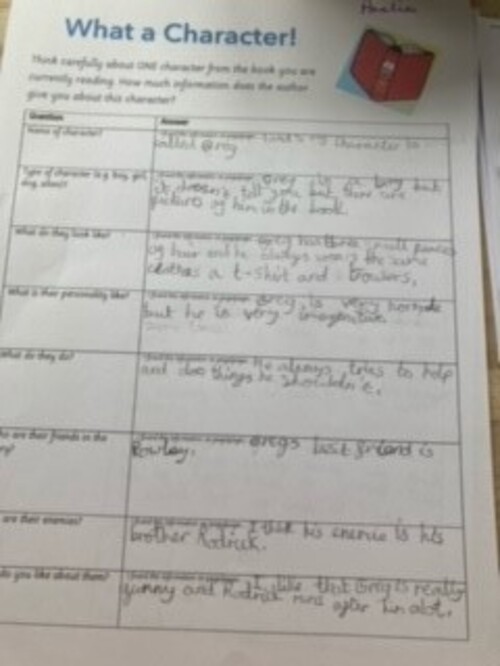



We have been working very hard this week!
We have had our new Maths workbooks delivered, and have started a unit called ‘Fraction, Decimals and Percentages.’ We have also started a new English unit called ‘Gadgets’ which is all about creating and writing persuasively about gadgets designed for a spy. We got into the right frame of mind by reading an extract from a book in the ‘Alex Rider’ series, before answering questions based on what we had read. Then, we had a go at refining our persuasive skills which will help us with our writing next week. In Art this week, we learnt about perspective and created our own pictures demonstrating this skill – don’t they look fantastic? We also got out and about on a ‘Scavenger Hunt’ as part of our PSHE topic. We enjoyed hunting high and low for all of the objects, and some were easier to find than others!
Here's how we got on…
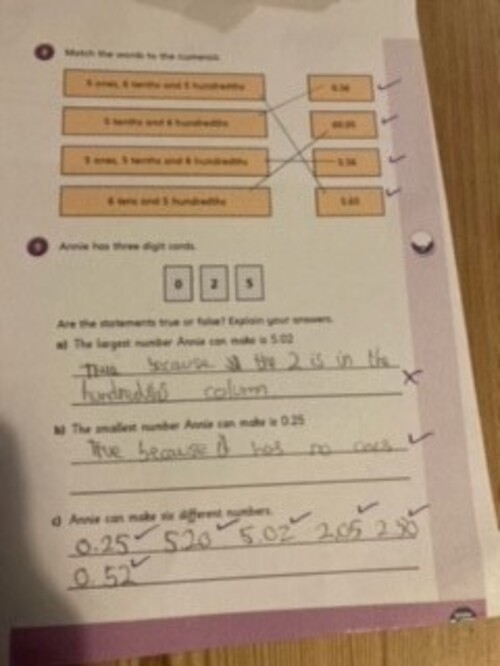




As part of our first week of home learning, we used an online ‘Word Cloud’ program to create clouds based around a book character. Can you guess which characters they are describing? We also put ourselves in the shoes of a book character and wrote poems to describe what they would experience throughout a story. We have also started a new science topic: ‘Electricity’. We learnt about the history of electricity, and then created posters to summarise the key information and the important milestones in it’s development. We also had a go at creating our own optical illusions in Art. We followed a step by step video to create the illusion of curved lines using only straight ones. And as if that wasn’t enough, we continued learning about Islam in RE. We produced an information page for a younger child about Ramadan and Eid.
Here’s how we got on..





To conclude our ‘Living Things’ topic in Science, we looked at how useful sorting keys were in being able to identify specific types of animals and plants. We had a look at some examples and saw the importance of creating questions that had only two possible answers: ‘Yes’ or ‘No’ and also of using scientific vocabulary, such as ‘Is it a vertebrate?’ rather than ‘Does it have a backbone?’
We then worked in groups to create a key that would successfully identify a range of living things. Here’s how we got on…

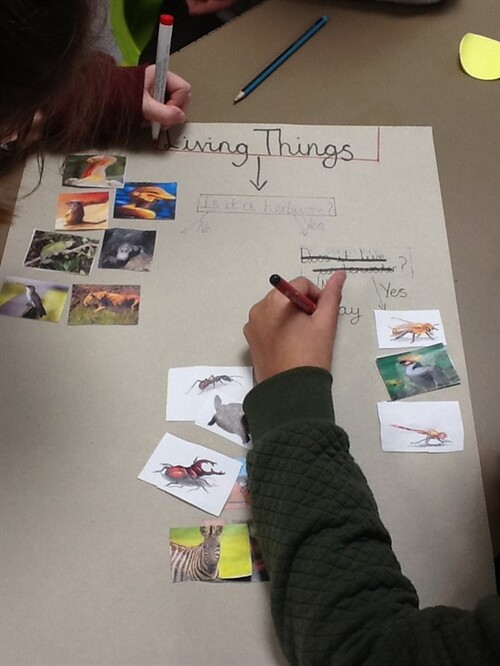



In this session, we learned how codes were used to encrypt messages during WW2 to ensure messages were not intercepted. We learned about the German invention – the Enigma machine – and the way it substituted letters for alternative letters and created a virtually unbreakable code! We then learned about Alan Turing, a British mathematician, who deciphered the ‘Enigma Code’ as it became known and gave the British and their allies an advantage. Winston Churchill described Turing’s work as potentially shortening the duration of WW2 by about 2 years, such was the significance of this breakthrough. We ‘built’ our own Enigma machines based on the basic workings of the original. We used them to crack codes and also to encrypt our own messages for a friend to solve! Here’s how we got on…





As part of our ‘Living Things’ topic, we have conducted an experiment to see how far germs spread. First, we coated out hands in ‘germs’ (we used glitter) and then washed them thoroughly with water and soap to remove as much of the glitter as we could. At the end of the day, we observed where in the school we could see glitter, despite thinking we’d washed most of it away. We found it on the floor around our tables, on the door handles, in the cloakroom and even in the playground. This showed us how quickly and how far germs spread, without us even realising!




Year 6 had a very exciting day learning about the events during VE Day on the 7th May, 1945. We came into school dressed in clothes that reflected the WW2 era and held a VE Day party to celebrate the event. We watched the announcement that was broadcast by Winston Churchill and footage of the celebratory events that followed in London and throughout the rest of the country. We thought that it must have been a bittersweet celebration – joy at the ending of the war in Europe, but sorrow for all that was lost throughout the previous six years. We enjoyed homemade scones with butter and jam (thank you Mr and Mrs Geary!) and played a game called Beetle Drive that would have been enjoyed by children during that time.
Thank you to everyone who helped put together the outfits - the children looked incredible?





In our history lesson, we researched another way in which life changed for people in Britain during WW2 – the fact that they now had to carry a gas mask with them. We watched ordinary citizens doing a gas mask drill and imagined how difficult and fiddly it must have been to fit them in a hurry – especially when consumed by panic!
We independently researched information about gas masks using ‘information stations’. These are areas that are ‘set up’ around the classroom, each with a different question to answer, or task to do. Our four stations were based around:
Here’s how we got on…
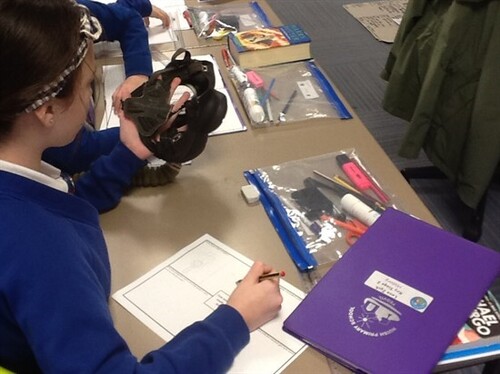




As part of our WW2 topic in history, we have been learning about the ‘Dig for Victory’ campaign launched by the British government that encouraged citizens to grow their own vegetables. We watched a video broadcast to the nation in 1940, explaining how easy growing vegetables was to do, and how important it was to get involved in the war effort. We learned about the word ‘propaganda’ and how biased messages could be given through video, radio broadcasts and posters in order to encourage people to think or act a certain way. We then designed our own propaganda posters to persuade people to grow their own vegetables!
Here are some of the finished pieces…





This week, we continued our science work on ‘fungi’ and investigated what conditions were needed to best activate yeast (a type of fungi). We set up three experiments each using a different combination of ingredients: yeast and warm water; yeast, warm water and baking soda; and yeast, warm water, baking soda and sugar. These ingredients were put into three different measuring cylinders, each with a balloon stretched over the top. We decided that the more the balloon inflated, the more gas that was being produced by the yeast, and therefore, the more active it was. Then, we watched and waited….
After eleven minutes, the measuring cylinder with the yeast, warm water, baking soda and sugar had produced the most gas (although unfortunately, the balloons did not inflate as spectacularly as we’d hoped!) but we could see by the vigorously bubbling mixture that it was active. We concluded that the sugar was necessary to give the yeast an energy source and helped to increase the amount of gas produced.

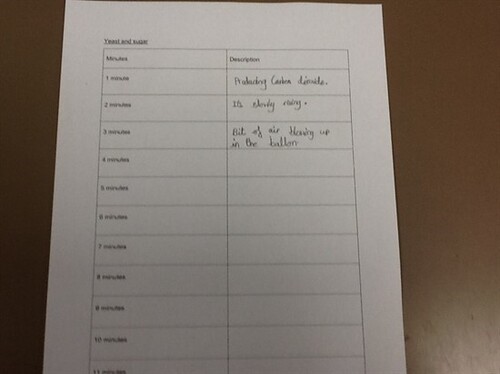


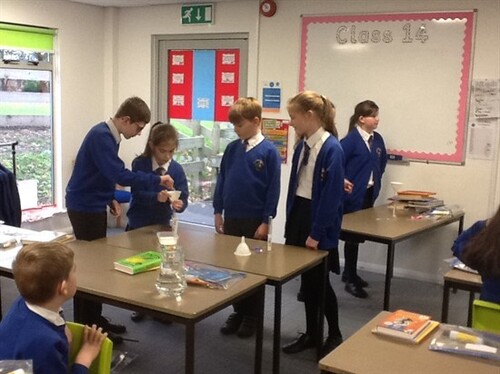
Having learned about the six kingdoms into which all living things can be grouped, we looked in more detail about mould - a type of fungi. We set up an experiment to find out which conditions would allow for the most mould growth, and decided to investigate whether cleanliness had any bearing on the amount of mould that would develop. We decided to put a piece of bread into an airtight freezer bag, and handled the bread with one of the following: unwashed hands, hands washed with water, hands washed with soap and water, and hands cleaned with antibacterial gel. Then we left them all in the same location in the classroom for consistency. Each group had slightly different results, but generally, the pieces of bread that had been handled by unwashed hands, and hands only washed with water displayed the most mould after almost two weeks – perhaps unsurprisingly! We concluded that cleanliness does impact on the growth of fungi and in particular, mould.



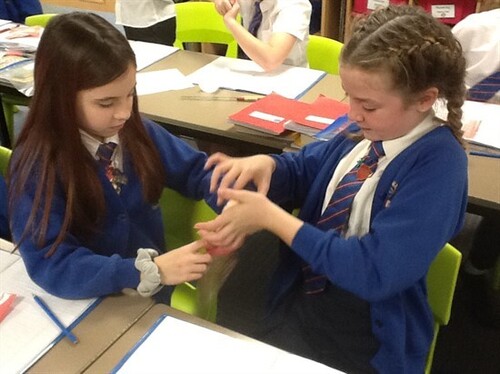

The children of Year 6 produced their Remembrance Assembly last Friday. The assembly can be viewed below.
In art week, we learned about a style of painting called ‘Impressionism’ and we looked at the artist Vincent van Gogh. We studied one his most famous paintings called ‘Starry Night’, which he painted in 1889, towards the end of his life. We first annotated the painting to show the elements in the painting, such as the distinct cypress tree in the foreground, the glowing crescent moon and the iconic church steeple. We then had a go at sketching some of these elements, focussing on trying to imitate the dashed line effect created by van Gogh. After, we experimented with warm and cool colour palettes to see which combinations of colour would give the effect we wanted, then put all of this together to create our own versions of Starry Night using oil pastels. Here’s how we got on…





As part of our WW2 history topic, we have been learning about air raid shelters. We looked at different sources that told us a bit more about what it was like to have to spend time in an Anderson shelter during an air raid. One of the sources was a real eyewitness account by Patricia McGowan, who was 17 at the time. We then took on roles such as a mother, father and child, and tried to imagine what it would have been like for them. For example, we discussed that the children might bring books or boards games to pass the time, whilst a mother might put on a brave face to avoid frightening her children. We then wrote postcards to a loved one to explain what our experiences were like…





As part of our WW2 topic in history, we have been learning about the events that led up to the declaration of war. We listened to Neville Chamberlain’s broadcast to the nation on 3rd September 1939, in which he declared war on Germany. We then had a go at writing our own speeches, imagining that we were Neville Chamberlain. We tried to use vocabulary that reflected that period of time, and use language that sounded authoritative, but would also reassure a nation.
Here are some examples…


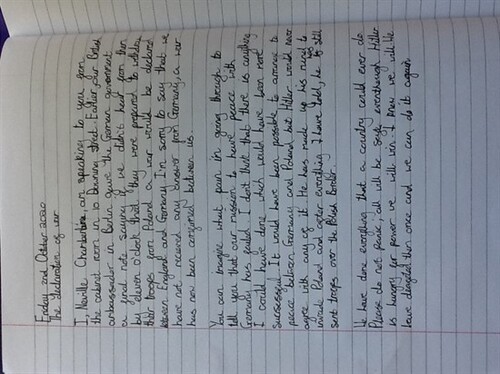
Over the past few computing sessions, we have been using the program ‘Scratch’ to create times tables games aimed at a younger audience. We chose a background a sprite for the basis of the game, then added features such as a scoring system, a way of randomly generating the questions and even sound effects for correct and incorrect answers! Next week, we are going to use some of the skills again when creating multiple choice quizzes based on our WW2 history topic.





In science, we have been learning about ‘Living things’ and how they can be classified. We identified the key differences between living, non-living and once-living things then embarked on a hunt around the school grounds to see what evidence of each we could find. We discovered that some non-living things like feathers could actually be evidence of living things on our site.




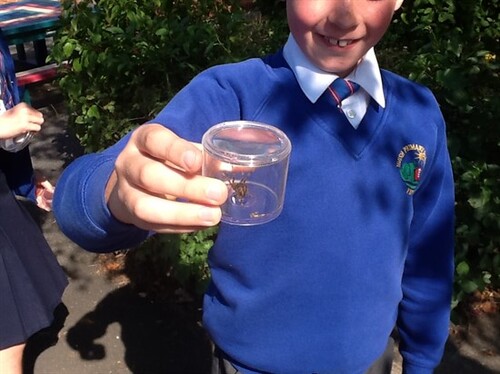
In RE, we are learning about Islam. Most recently, we have been learning about a special event according to Islamic belief called ‘The Night of Power’ or ‘Lailat al Qadr’. This is the night when Allah (God) passed on words to Muhammad (a prophet) whilst he was praying in a cave. This night is so important to Muslims that it is described as being ‘better than a thousand nights’ in the Qur’an.
We read the version of events together, then split into groups to act out different parts. We thought about why Muhammad had been chosen, what the message from God might have been and why the night might be described as being better than a thousand nights.




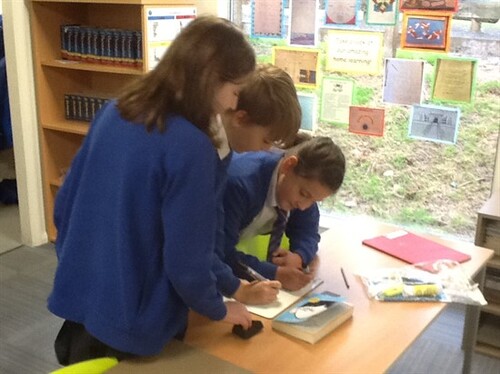
Class 14 have been writing about superheroes! For a homework task, we had to invent a superhero and decide what their origin, powers and nemesis would be. Then, we used these ideas as a basis for our literacy work. Here are some examples of our work…








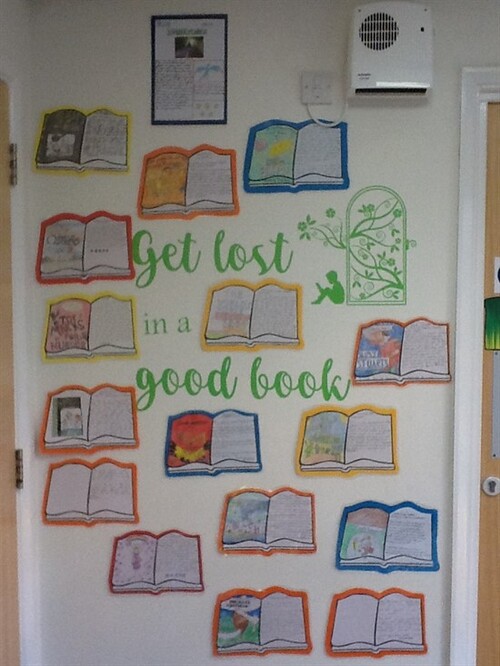
We have also been working hard on our new history topic: World War Two. We started by looking at some significant events that took place in the 20th Century, such as the world wars, the moon landing, the sinking of the Titanic and England’s World Cup victory. We tried to order them and estimate the years they took place. We thought it was amazing that Neil Armstrong could have landed on the moon at a time when there was no internet, and that England hadn’t won a World Cup since 1966!
In our next lesson, we looked more closely at the events that lead up to the beginning of World War Two. We learnt that when Hitler became leader, he wanted to make Germany great again, having faced poverty and despondency after the loss of WW1. He built a powerful army, despite being banned from doing so, and ordered it to invade neighbouring countries such as Poland and Czechoslovakia. In order to fight against these invasions, war was declared on Germany. We created ‘freeze frames’ and short plays to show the order of events, and used ‘thinking, feeling and saying’ cards to show what the key people involved may have felt and acted. We finished by listening to Neville Chamberlain’s actual declaration of war speech which was broadcast in 1939. In our next lesson, we are going to write and record our own declaration of war speeches!
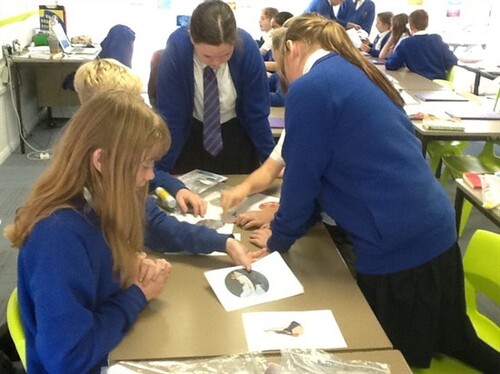




Check out some more of our Home Learning!
We have been learning about the Mayans, writing persuasive adverts for new and exciting gadgets and finding out about the pilgrimage to Mecca as part of our work on Islam. As if that wasn’t enough, we have also found time at home to learn new cooking skills, spot birds in our gardens and even try a little bit of fishing!
You are working so hard and we are very proud of all of you! Keep it up:-)

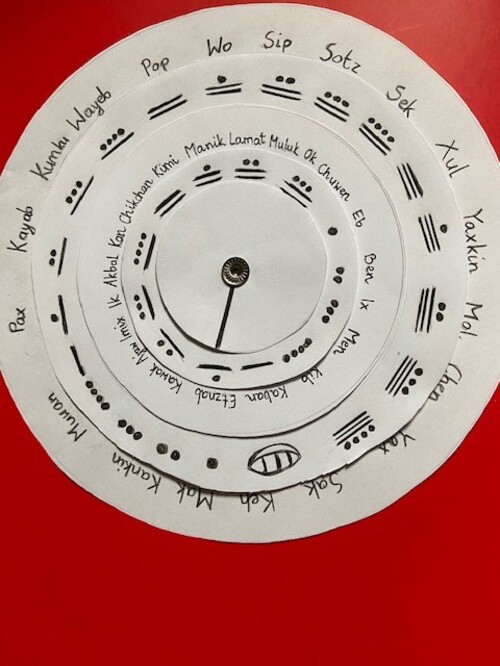


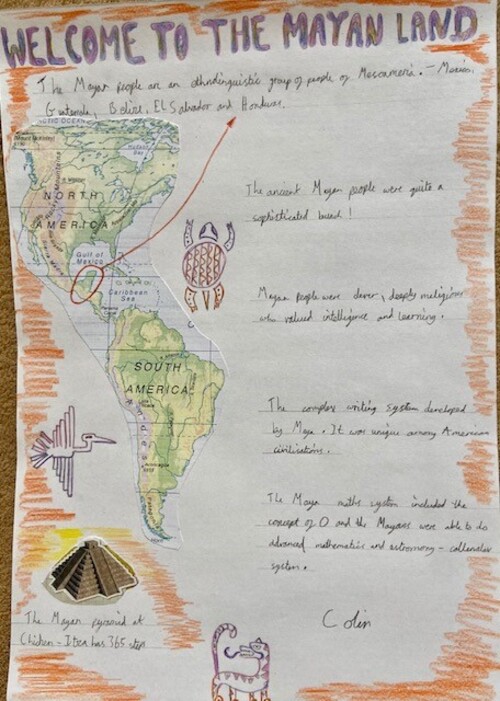
To finish off the week, Class 14 were asked to recreate their favourite book cover, making it look as close to the real thing as possible, then write a review to let others know why they had enjoyed it so much. Here are some of the fantastic finished pieces:-)
So next time you want to find a good book, take a look at these highly-recommended reads and perhaps you’ll find just what you’re looking for!

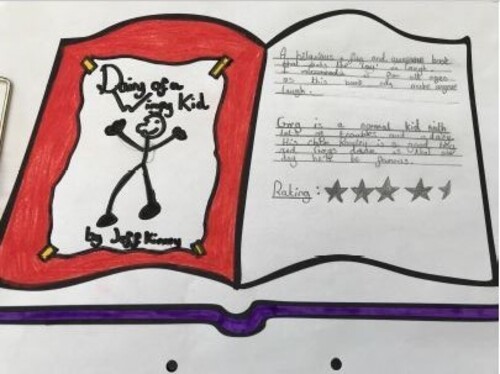


As part of their English work last week, Class 14 were tasked with creating a word cloud to describe their favourite book or character from a book! They also had to create a poem imagining they had ‘fallen into’ their favourite book and had become part of the plot. There were some amazingly creative pieces of work produced:-) Can you guess which books and characters are being described by these words clouds and poems?



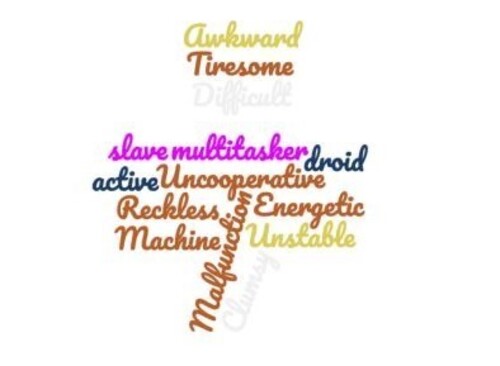

As part of their Geography unit - ‘Natural Disasters’ - Class 14 have made their own models demonstrating how they are caused and what effect they have on the Earth and people’s lives. Check out our home-made tornadoes, volcanoes, droughts and tsunamis!
Thank you to everyone for putting so much time and effort into your creations and it is lovely to see how different they all are.
I hope you had fun making them:-)


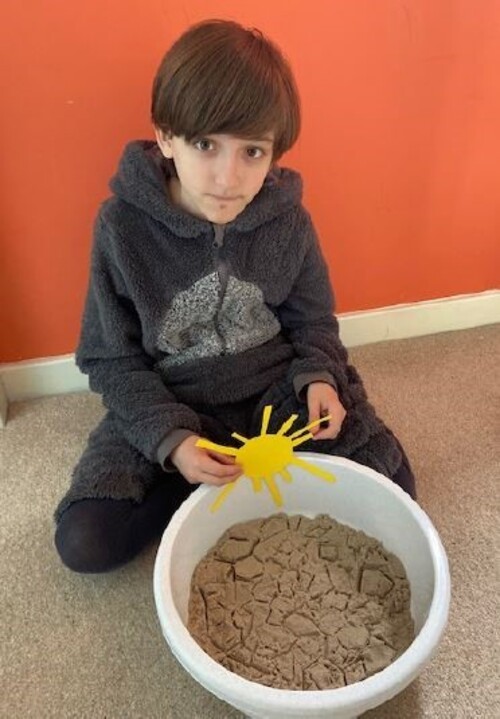


Take a look at some of our VE Day celebrations!
I know many of you took the time to bake, decorate, dress up and celebrate (at a distance!) with friends, family and neighbours to commemorate this very special 75th anniversary – judging by the pictures, you all look like you had a fantastic time:-)





Take a look at some fo the fantastic Home Learning Class 14 have been doing over the last week or so…
They were tasked with writing a balanced argument about whether children should always learn at home – I’m sure you’ll agree, they are very well-written and raise a lot of good points to get you thinking!
They have also been busy learning about angles in polygons in Maths, the circulatory system in Science, vocabulary linked to cities in Spanish and much more!
I am very proud of all of your hard work – keep it up:-)





As part of their RE work on Islam, Class 14 researched the festival, Ramadan, and created fact files for younger children. Some chose to hand write their research and illustrate it beautifully, and other chose to use their computing skills to create videos and powerpoints! Either way, they look fantastic and are very informative – well done:-)



Class 14 have designed some ‘graffiti art’ inspired by the street artist Keith Haring. They focused on creating a really bold look for the letters and thought about clever finishing touches for their designs, such as paint dripping from the word ‘Art’ and a striking blue colour for the word ‘Splash’. These look fantastic – well done Class 14!

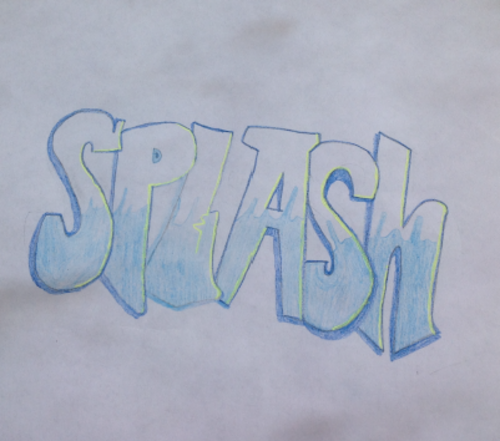



To celebrate St George’s Day, Class 14 drew dragon eyes and used their shading skills to layer colour and make them look as realistic as possible. I’m sure you will agree, they look FANTASTIC! Well done Class 14:-)

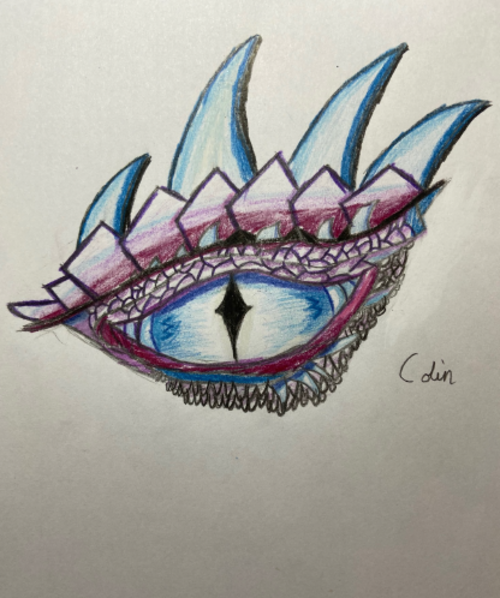



Year 6 have been learning about the beliefs, symbols, objects and practices that are important in the Christian faith.
As part of this, we learnt about why Christinas pray, where they pray and how they pray.
Take a look at Milly’s own, very emotive prayer. It seems even more relevant given the current situation. A beautiful prayer Milly:-)
Take a look at some of the things Class 14 got up to over the Easter break. You all look like you had great fun!





As part of their Geography work on Natural Disasters, Class 14 have researched, or invented their own, natural disaster and created a news report about it. Take a look at some fantastic examples…

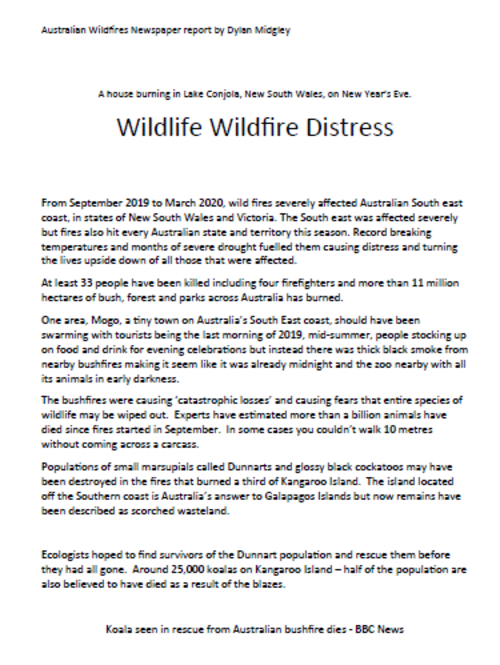

Class 14 have been practising their spellings…and getting a little but messy at the same time!!





Take a look at some more of the fantastic work Class 14 have been doing!
We have produced some stained glass windows as part of our work on Christianity – don’t they look lovely and colourful? We have also done some research about natural disasters as part of our Geography topic. We also used out Computing skills to write them up and present them so the are clear to read. Over Easter, we also had fun with some Easter bookmarks!
Well done Class 14 – keep up the great work:-)










Take a look at some of the fantastic work that has been completed at home by Class 14! From wonderful VE Day stories and postcards, to super science fact files and brilliant numeracy. Thank you to all of you for your hard work so far – keep it up:-)





Class 14 showcased some fantastic outfits as part of our World Book Day celebrations! From the teenage spy, Alex Rider to Mary Poppins; from the wonderful Willy Wonka to the studious Matilda - we had a great range of characters from our favourite books. A big thank you to everyone for the time and effort that went into the costumes!
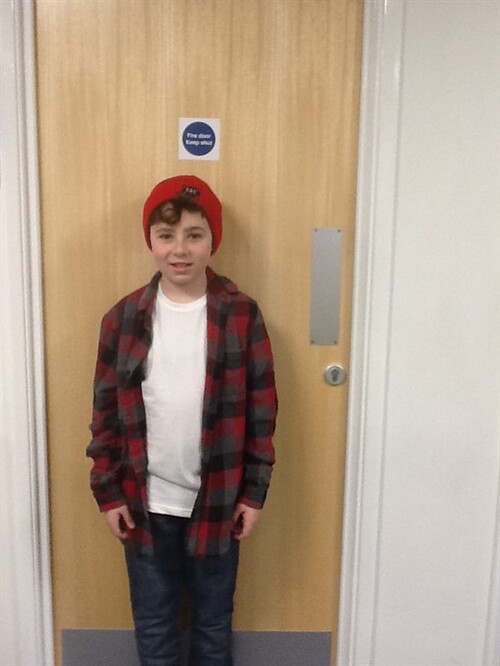




As part of Yeovil’s plans to celebrate the 75th Anniversary of VE Day on May 8th this year, Natasha Rand, a local community artist, visited Huish to start an inter-generational art project. Children from Year 6 took part in a workshop to create bunting that will be displayed in Yeovil town centre when the celebrations take place in May. Children used the colours red, white and blue to design their bunting and decorated them with silhouettes of recognisable figures or objects from WWII. This linked perfectly with Year 6’s previous WWII history topic. Natasha commented on the amazing designs the children produced and was very impressed with the creativity and enthusiasm of the children involved. The second part of this project will see ten children from Year 6 join Natasha at a local elderly care home to create more bunting with some of the residents.





In Science, having proved that light travels in straight lines and cannot bend, we investigated the question, 'How can we see without being seen?' We looked at how a periscope works and the uses it has in a submarine. We then made our own periscopes to see if we really could see without being seen!
Here's how we got on...





As part of our Geography work on California, we looked at its location on the San Andreas fault line, and the devastating earthquakes that are prone to hit the region because of this. In particular, we researched two earthquakes that hit in quick succession in July 2019. We researched the cause of these quakes, the damage caused by them and the potential of aftershocks in the following days and weeks. We shared our research in the form of news reports - reporting live from California in the immediate aftermath of the quakes. Here we are writing up our scripts...news reports to follow later when we have finished editing them!





We took inspiration from our literacy work on Macbeth for our art day on Friday. We first focussed on the skills needed to show light and shadow on objects, such as: cross hatching, stippling and smudging. We drew still life fruit to practise these skills and made them look incredibly life like! Then, we applied these techniques to our eerie 'Macbeth moonscapes'. We thought about how the light of the moon would illuminate different features and then used chalks and black silhouettes to build up the look we wanted. Here's how we got on...





Part 2 - In this session, we were set the task of planning an investigation to prove that light travels in straight lines. Before starting, we worked in groups to decide: what our independent and dependant variables were; how we were going to make it fair; what equipment we would need and how we were going to record our results. Here's how we got on...





Part 1 - Class 14 have been studying 'Light' as part of our Science topic. In an introductory session, we used torches and a range of materials to explore the way light travelled. We discovered that ears(!) are translucent and that 8 pages of a book put together were translucent, but 9 were opaque. Next time, we are going to plan an investigation to prove that light travels in straight lines.
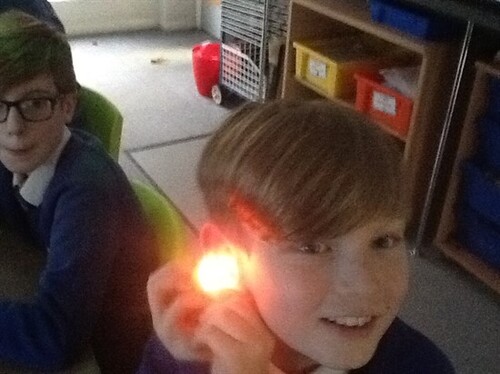




Class 14 finished the Autumn term on a fun note with their Christmas party. Christmas jumpers, sparkles, party games and fantastic dance moves were the order of the afternoon! We had a great time:-)




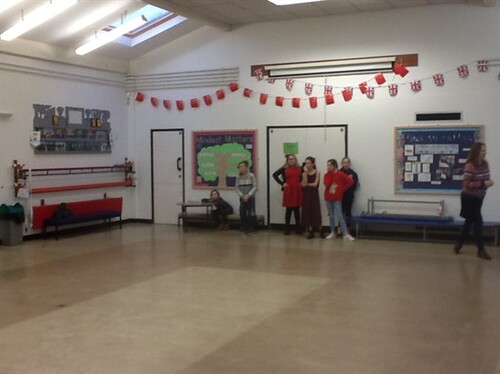
We have been learning about VE day as part of our work on WW2. We held our very own VE day so that we could imagine how people in Britain would have celebrated the end of WW2. We made scones, corned beef sandwiches and jelly, and also listened to Winston Churchill's victory speech and sang along to some war-time music!





As part of our topic on WW2, we have been learning about gas masks. We took part in a session where we visited 4 'stations' - each one with a different focus linked to gas masks. For example, on one station, we learnt about the different types of masks, and on another, we learned about the propaganda posters that were published to encourage people to wear them.

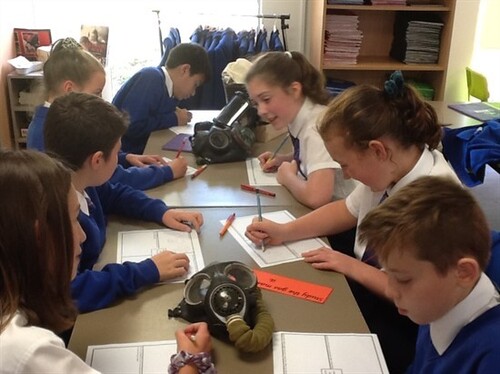

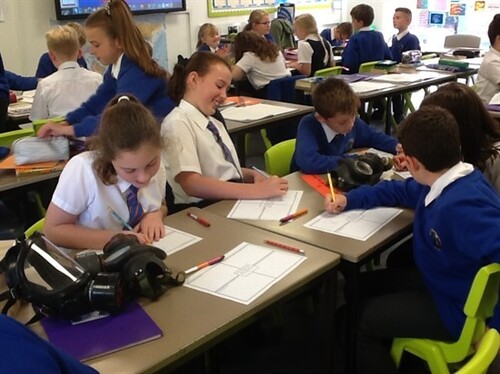

Class 14 had a fun-packed trip to the Fleet Air Arm Museum as part of our WW2 topic. We looked the part, dressed as evacuees, and got a little taste of what life would have been like during this time. We were lucky enough to have a guided tour around the museum where we learnt about the different types of aircraft used during the war and how they had been specially adapted to carry out certain tasks. We also took part in a rationing workshop where we had to plan a menu for Mrs Parkin. It was harder than we thought and we had to make some interesting meal choices - like rabbit pie for dinner! We also learnt about the Battle of Britain and the important role played by women and Britain’s allies in securing a British victory! We had a fantastic, informative day and all of the staff at the museum said how well-behaved and polite the children were. Well done Class 14!

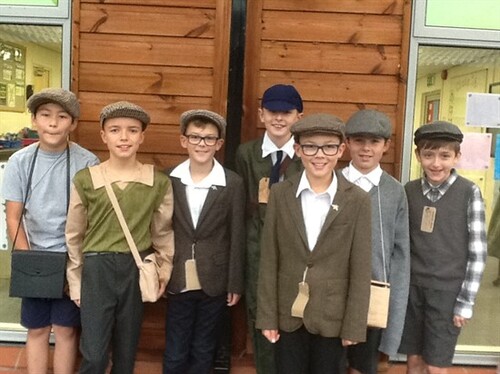



Our year 6 leavers prom was held during the last week of term, where the children dressed in their finest outfits and danced the night away to celebrate their last few days at school. We wish them the best of luck at their secondary schools in September.





Year 6 went to the Octagon to see the BBC’s Orchestra on the 18th June. The music was fantastic and the presenter made it all really fun and exciting.

Class 13 & 14 were really lucky to have Lt Cdr Hollingsworth explain the different roles of the Royal Navy. She explained that her role is like the headteacher of a school, but that her students are the fighter pilots who fly all of the noisy jets around Yeovil.
Ellie told us about the exciting career opportunities that can be found within the Navy. She explained that when onboard a ship everyone is on duty all of the time, but that they get good holidays when they return. Life onboard a ship is like being in a village - lots of different people are needed to provide all that the sailors need during their time (chefs, doctors, chaplains, mechanics, engineers, postal workers, to name but a few).



We had fun sharing our California pick and mix homework!

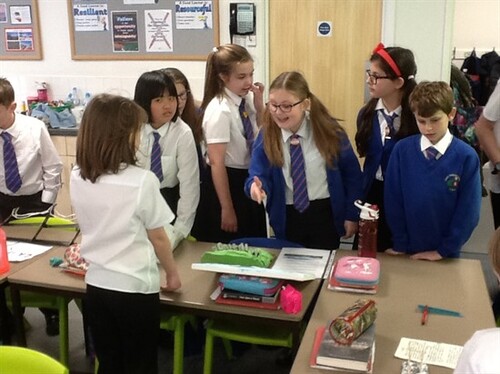


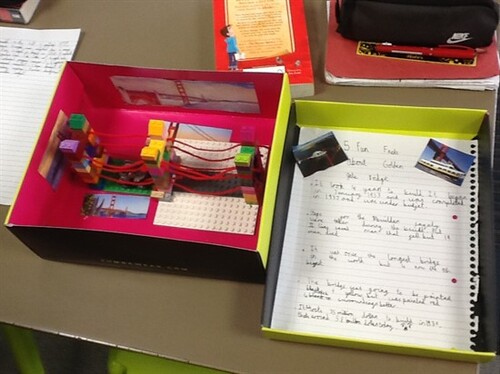
As part of our 'Inspiring Futures Programme' Y6 had a visit from Vicki Cotter who explained what her career as a barrister involves.


Class 14 had a visit from the Road Safety team and were reminded how to keep safe when crossing the roads. Stop, Look, Listen and Think!
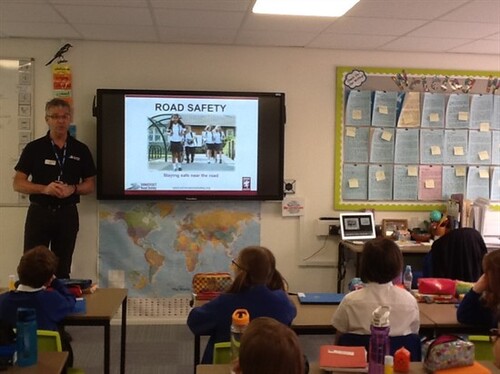


In science, Class 14 have been investigating 'Light' and this week they have used a light box and prisms to refract light and make rainbows. They also created coloured spinners to create 'white light'.





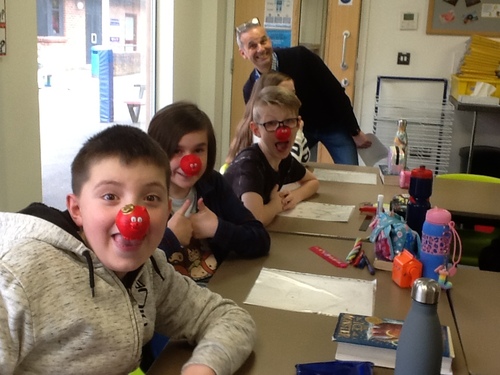








To help us celebrate World Book Day, we investigated the brilliant book, ‘The Lost Words’ by Robert MacFarlane and Jackie Morris.
The book contains poems about nature and consists of words that are fading from the English language as children are spending less time outdoors discovering the wonders of nature around them.
The children explored the nature that is around the school grounds, collected word banks, listened to and performed poetry throughout the week. Furthermore, they made observational sketches, used pastels and watercolours of some of our British endangered species.
Over two days, each year group spent time with Pete The Poet who discussed the beauty of ‘The Lost Words’ and reassured them that it is ok not to understand every part of a poem, but to enjoy it for the way it makes you feel.
Sharing assemblies were held to celebrate the work and achievements created over the week.
